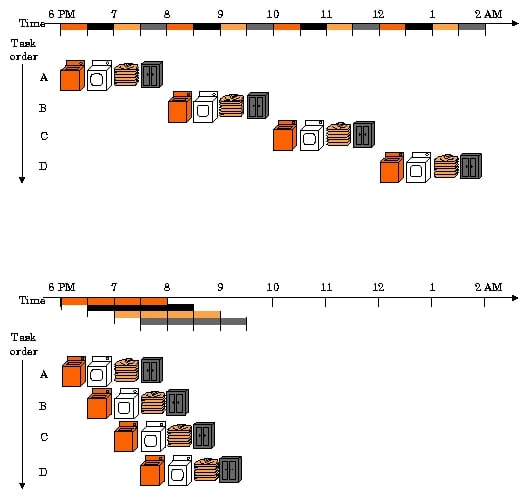Subscribe to wiki
Share wiki
Bookmark
Monad
We've just announced IQ AI.
Monad
Monad is a high-performance, Ethereum-compatible Layer 1 blockchain. It significantly enhances the balance between decentralization and scalability. Keone Hon (CEO), James Hunsaker (CTO), and Eunice Giarta (COO) are the co-founders of Monad. [1]
Overview
Monad is a high-performance, Ethereum-compatible Layer 1 blockchain providing portability and performance. It supports full bytecode compatibility for the Ethereum Virtual Machine (EVM), allowing applications built for Ethereum to be ported without code changes. Monad also offers full Ethereum RPC compatibility for seamless use with tools like MetaMask and Etherscan. [2][3]
In terms of performance, Monad delivers 10,000 transactions per second (tps), equivalent to 1 billion transactions per day, with 1-second block times and finality. This enables it to support more users and interactive experiences at lower transaction costs. Its implementation of the Ethereum Virtual Machine complies with the Shanghai fork, ensuring identical outcomes when simulating historical Ethereum transactions. [2][3]
Monad's performance improvements are driven by several innovations: MonadBFT (pipelined HotStuff consensus with additional research improvements), Deferred Execution (pipelining between consensus and execution to increase the execution budget), Parallel Execution, and MonadDb (high-performance state backend). Despite featuring parallel execution and pipelining, blocks in Monad are linear, with transactions ordered linearly within each block. [2][3]
Pipelining
Pipelining is a method for achieving parallelism by breaking down tasks into smaller units that can be processed concurrently. In computer processors, pipelining enhances throughput by executing a sequence of instructions in parallel, all within a single clock cycle. [4]

Asynchronous I/O
Asynchronous I/O is an input/output processing method that enables the CPU to proceed with other tasks while data communication is ongoing. Given the significant speed difference between the CPU and disk/network operations, asynchronous I/O allows the CPU to initiate an I/O operation and carry on with other instructions independent of the I/O result rather than waiting for the operation to complete before proceeding. [5]
Technology
MonadBFT
MonadBFT is a high-performance consensus mechanism designed to achieve transaction ordering under partially synchronous conditions with Byzantine actors. It is derived from HotStuff, incorporating Jolteon/DiemBFT/Fast-HotStuff improvements. It is a pipelined, two-phase Byzantine Fault-Tolerant (BFT) algorithm with optimistic responsiveness. It has linear communication overhead in normal conditions and quadratic communication during timeouts. Communication in MonadBFT occurs in phases. The leader sends a signed message to voters, who then send signed responses to the subsequent leader. MonadBFT reduces the process from three rounds to two by utilizing quadratic communication complexity during leader timeouts. [6]
Deferred Execution
A novel aspect of the Monad blockchain is the decoupling of execution from consensus. Consensus involves Monad nodes agreeing on the official ordering of transactions while execution carries out those transactions and updates the state. [7]
In Monad's consensus, nodes agree on the transaction order without the leader or validating nodes executing those transactions first. The leader proposes an ordering without knowing the resultant state root and validating nodes vote on block validity without verifying if all transactions execute without reverting. [7]
This approach allows Monad to achieve significant speedups, enabling a single-shard blockchain to scale to millions of users. Unlike Ethereum, where execution is a prerequisite to consensus, Monad separates these processes. In Ethereum, nodes must agree on both the transaction list and the state root after execution, requiring the leader to execute all transactions in the proposed block before sharing it and validating nodes to execute those transactions before voting. This paradigm in Ethereum limits the time for execution, necessitating a conservative gas limit to ensure computation completes on all nodes within the budget, even in the worst-case scenario. [7]
Parallel Execution
Monad executes transactions in parallel while maintaining Ethereum's execution semantics. Despite this parallelism, Monad blocks are structured similarly to Ethereum blocks, with transactions ordered linearly. The outcomes of block executions are consistent between Monad and Ethereum. [8][9]
Monad facilitates parallel execution for EVM transactions without shared dependencies. Transactions and blocks remain linearly ordered, with Monad identifying parallelizable transactions within this order. This enhances transaction processing efficiency without disrupting existing applications. Apps developed for Ethereum and deployed on Monad will function as intended. [8][9]
Transactions without shared dependencies are executed concurrently on separate cores, while those with dependencies are executed sequentially. This consecutive scheduling reduces I/O overhead, significantly contributing to latency in the current EVM setup. [8][9]
MonadDb
MonadDb is a specialized database designed for storing blockchain state. While most Ethereum clients use key-value databases like B-Tree or LSM-Tree, Ethereum employs the Merkle Patricia Trie (MPT) data structure for state storage. This leads to a suboptimal solution where one data structure is nested within another of a different type. MonadDb addresses this by natively implementing the Patricia Trie data structure on disk and in memory. [10]
Monad executes multiple transactions in parallel, necessitating non-blocking I/O operations for database reads. MonadDb leverages asynchronous I/O (async I/O), utilizing the latest kernel support, such as io_uring on Linux, to handle I/O operations efficiently without relying on many kernel threads. In addition to async I/O, MonadDb implements optimizations related to I/O, bypassing the filesystem to reduce overhead. [10]
Partnerships
Investors
On February 14th, 2023, Monad Labs announced that it had raised $19 million in seed funding led by Dragonfly Capital. The round had 70 participants, including Placeholder Capital, Lemniscap, Shima Capital, and Finality Capital. Angel investor Naval Ravikant, co-founder of AngleList, also participated. [11]
On April 9th, 2024, Monad Labs announced a $225M fundraising, with Paradigm leading the investment. This funding milestone provided ample resources to scale the team and bring Monad to production. Institutional investors included Electric Capital, Castle Island Ventures, Greenoaks, eGirl Capital, Rebirth Ventures, Amber Group, Animoca Ventures, Archetype, Bankless Ventures, Big Brain Holdings, Bodhi Ventures, Breed, Caladan, CMS Holdings, Coinbase Ventures, CoinFund, DBA, Edessa Capital, Figment Capital, Flow Traders, Galaxy, GSR Ventures, Hailstone Labs, Hermeneutic Investments, HTX Ventures, IOSG Ventures, Lightspeed Faction, Makers Fund, Manifold Trading, Merit Circle, Mirana Ventures, Nascent, Presto Labs, Robot Ventures, SevenX Ventures, Shoe on Ventures, Superscrypt, Tess Ventures, Wintermute Ventures, among others. Angel investors included Inversebrah, Ansem, Hsaka, punk6529, Saquon Barkley, Eric Wall, Rune Christensen, Bryan Pellegrino, Robinson Burkey, Luca Netz, Mert Mumtaz, Shoku, and others. [12]
Integrations
See something wrong?
